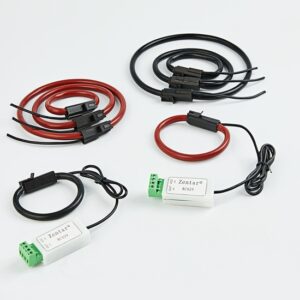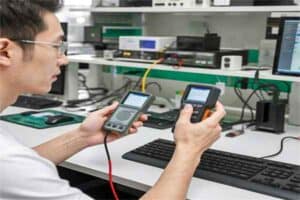Generally, there are four types of leakage currents: semiconductor component leakage current, power supply leakage current, capacitor leakage current and filter leakage current
1. Leakage current of semiconductor components
The very small current that flows through the PN junction when it is turned off. D-S is forward biased, G-S is reverse biased, and after the conductive channel is opened, current will flow from D to S. But in fact, due to the existence of free electrons, free electrons are attached to SIO2 and N+, resulting in leakage current of D-S.
2. Power leakage current
In order to reduce the interference in the switching power supply, according to the national standard, an EMI filter circuit must be provided. Due to the relationship of the EMI circuit, there is a small current to the ground after the switching power supply is connected to the mains, which is the leakage current. If it is not grounded, the shell of the computer will have a voltage of 110 volts to the ground, and it will feel numb when you touch it with your hands, and it will also affect the work of the computer.
3. Capacitor leakage current
The capacitor medium cannot be absolutely non-conductive. When the capacitor is applied with a DC voltage, the capacitor will have a leakage current. If the leakage current is too large, the capacitor will heat up and be damaged. Except for electrolytic capacitors, the leakage current of other capacitors is extremely small, so the insulation resistance parameter is used to represent their insulation performance; while electrolytic capacitors have large leakage current, so the leakage current is used to represent their insulation performance (proportional to capacity).
When the rated DC working voltage is applied to the capacitor, it will be observed that the change of the charging current starts to be large, and it decreases with time. When it reaches a certain final value, it reaches a relatively stable state. This final value current is called leakage current. i=kcu(μa); where k is the leakage current constant in μa(v·μf)
4. Filter leakage current
The leakage current of the power filter is defined as: the current from the filter housing to any end of the AC incoming line under the rated AC voltage.
If all the ports of the filter are completely insulated from the housing, the value of the leakage current mainly depends on the leakage current of the common mode capacitor CY, that is, it mainly depends on the capacity of CY.
Due to the size of the leakage current of the filter, which involves personal safety, all countries in the world have strict standards for it. For 220V/50Hz AC power supply, the leakage current of the noise filter is generally required to be less than 1mA.




